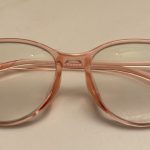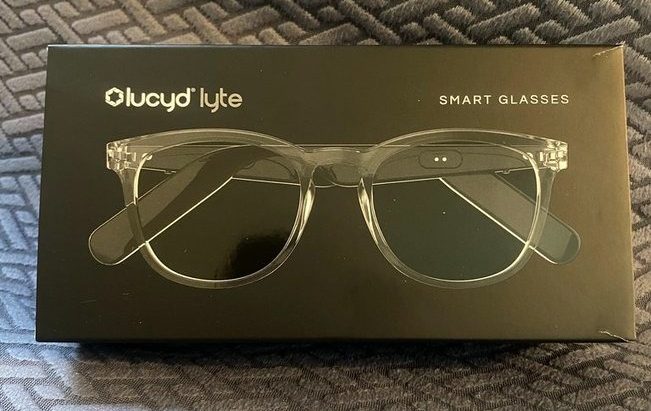This is a sponsored guest post. All opinions are my own.
What Happens to Your Eyes When You Read on Screens Without Blue Light Glasses?
In today’s world, digital screens have become an essential part of our daily lives. Whether we’re working, studying, or relaxing, we spend a significant portion of our time reading or viewing content on smartphones, computers, and tablets. As our reliance on these devices grows, so does the awareness of the potential effects on our eye health.
One of the most talked-about solutions to these concerns is blue light glasses. These specially designed glasses are marketed as a protective barrier against the harmful effects of blue light emitted by digital screens. But with so many of us staring at screens for hours each day, what happens to our eyes if we don’t wear blue light glasses?
Let’s explore what happens when you read or work on digital screens without this protection.
Understanding Blue Light and Its Sources
What is Blue Light?
Blue light is a high-energy visible (HEV) light that falls within the blue-violet spectrum of visible light. It has a shorter wavelength and higher energy compared to other colors of light, which means it can penetrate deeper into the eye. While blue light is a natural part of sunlight, it is also emitted by digital devices like smartphones, computers, and tablets.
Our eyes are constantly exposed to blue light, but digital screens tend to emit a larger quantity compared to other light sources. As we use these devices more frequently, the amount of blue light entering our eyes increases, which has led to growing concerns about its effects.
Sources of Blue Light: Smartphones, Computers, Tablets, and Other Digital Devices
Today, the primary sources of blue light exposure are the screens we use daily. Whether it’s a smartphone screen you check first thing in the morning or the computer monitor you spend hours looking at for work, these devices are rich in blue light. Tablets, laptops, televisions, and even some LED lighting are also significant contributors. The more time we spend in front of these screens, the more blue light we are exposed to, increasing the chances of eye discomfort and long-term health risks.
Immediate Effects of Prolonged Screen Time
Digital Eye Strain
One of the most common complaints from individuals who spend extended hours in front of screens is eye strain, also known as digital eye strain or computer vision syndrome. Symptoms of this condition include dryness, fatigue, blurred vision, and headaches. The cause of these symptoms lies in the way we use digital devices.
When we read or work on a screen, our eyes focus intensely on the content. This focus often leads to reduced blinking, which can cause dryness and discomfort. Additionally, the glare from the screen, combined with the high-energy blue light, intensifies the strain on our eyes. Without the protection of blue light glasses, this strain is more pronounced and can lead to lasting discomfort.
Blurry Vision
Prolonged screen time can also lead to temporary blurred vision. This happens because our eyes become fatigued from focusing on the small text or images on the screen for an extended period. The eyes are not designed to stare at something so closely for long durations without taking breaks, and the intense focus required can strain the eye muscles. As a result, when you try to look at something further away, your vision may appear blurry until your eyes have had a chance to adjust.
Blue Light and Sleep Disruption
Impact on Melatonin
Melatonin is a hormone that regulates our sleep-wake cycle, also known as the circadian rhythm. It signals to our body when it’s time to sleep and when to wake up. However, exposure to blue light, particularly in the evening, can interfere with melatonin production. This is because blue light suppresses melatonin more than other wavelengths of light.
When we use screens at night, especially in the hours leading up to bedtime, the blue light emitted by the devices can delay melatonin production. As a result, it may take longer for us to fall asleep, and the quality of our sleep may decrease.
Effect on Circadian Rhythm
The circadian rhythm is our body’s internal clock that regulates our sleep-wake cycle. Exposure to blue light at night not only disrupts melatonin levels but also alters our circadian rhythm. This misalignment can lead to problems such as difficulty falling asleep, waking up frequently during the night, and feeling fatigued the next day.
Research has shown that regular exposure to blue light in the evening can have long-term effects on sleep quality and overall health. Poor sleep can result in a host of issues, from decreased productivity and concentration to increased stress and an elevated risk of chronic health conditions.
Long-Term Risks of Blue Light Exposure
Potential Retinal Damage
Recent studies have suggested that prolonged blue light exposure could potentially harm the retina, the layer of tissue at the back of the eye responsible for processing light and sending visual information to the brain. There is ongoing research to better understand how blue light may contribute to retinal damage, especially as we spend more time in front of screens.
The concern is that blue light, due to its high-energy wavelengths, might penetrate deeper into the retina and cause damage over time. Some researchers have even linked excessive blue light exposure to age-related macular degeneration (AMD), a condition that causes vision loss in older adults. While more research is needed to establish a direct link, it’s a possibility that many health experts are taking seriously.
Increased Risk of Eye Diseases
Besides potential retinal damage, excessive blue light exposure may increase the risk of other eye diseases. Conditions like dry eye syndrome, cataracts, and other age-related eye diseases could be exacerbated by prolonged exposure to blue light. While studies are still ongoing, many experts recommend taking steps to limit screen exposure as a precautionary measure.
As more people experience extended screen time, eye diseases associated with blue light may become more common. The key is to stay informed and adopt preventive measures to protect your eye health.
Symptoms of Blue Light Overexposure
Frequent Headaches and Migraines
Some individuals are particularly sensitive to blue light, and prolonged exposure can trigger headaches or migraines. The combination of glare, screen brightness, and intense focus can cause strain in the eye muscles, leading to discomfort in the form of headaches. In some cases, individuals who suffer from migraines may experience more frequent episodes after long periods of screen use.
Focus Fatigue and Eye Discomfort
Without blue light glasses, focusing on a digital screen for extended periods can also cause focus fatigue. This makes it harder to concentrate and can lead to increased discomfort, such as eye soreness, blurred vision, and difficulty maintaining attention. Taking regular breaks and using protective eyewear can help reduce these symptoms.
How to Protect Your Eyes
Blue Light Glasses
One of the most effective ways to reduce the strain caused by blue light is by wearing blue light reading glasses. These glasses are designed with special lenses that filter out or block a portion of the blue light emitted by digital screens. By wearing them during screen use, you can reduce eye strain, discomfort, and the risk of long-term damage.
Blue light glasses come in a variety of styles and designs, making it easy to find a pair that suits your needs. They are a simple yet effective solution for anyone who spends a lot of time reading or working on digital devices.
Screen Filters and Settings
In addition to wearing blue light glasses, you can adjust your screen settings to reduce blue light exposure. Many devices now offer built-in “night mode” or “blue light filter” settings that shift the screen’s color temperature to warmer tones, reducing blue light emissions. You can also install apps or software that automatically adjust the screen’s lighting based on the time of day, further protecting your eyes.
Taking Breaks
It’s essential to take regular breaks from screens to prevent eye strain. One popular method is the 20-20-20 rule: every 20 minutes, look at something 20 feet away for at least 20 seconds. This simple technique gives your eyes a chance to relax and refocus, reducing the risk of strain and fatigue.
Conclusion
Spending long hours reading or working on screens without protection can lead to immediate discomfort, such as eye strain, blurry vision, and headaches. Over time, the risks can become more significant, including disrupted sleep patterns, retinal damage, and an increased risk of eye diseases.
To maintain your eye health, consider wearing blue light glasses, adjusting your screen settings, and taking regular breaks. By being proactive about protecting your eyes, you can continue to enjoy digital devices without the negative effects of blue light exposure. Make sure to evaluate your screen habits and take the necessary steps to safeguard your vision. Your eyes will thank you!

Hi there! I am Emily Evert, the owner of Emily Reviews. I am 28 and live in a small town in Michigan with my boyfriend Ryan and our two pugs. I have a large family and I adore my nieces and nephews. I love reading memoirs, and learning about child development and psychology. I love watching The Game of Thrones, Teen Mom, Sister Wives and Veep. I like listening to Jason Isbell, John Prine, and other alt-country or Americana music. I created Emily Reviews as a creative outlet to share my life and the products that I love with others.
This post currently has one response.


















I own several pairs of blue light glasses and some are reading glasses! I wear them for all the reasons stated above!